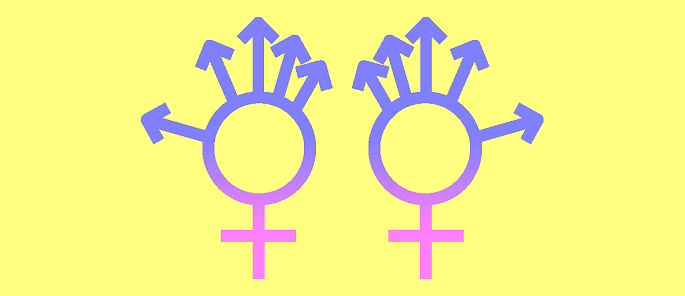Women with Dupuytren Disease
A traditional Dupuytren narrative is that Dupuytren is primarily a painless nuisance problem of bent fingers in old men. This perception does a disservice to many. Not only is Dupuytren common in women, it may also present a unique burden to women. Updating the traditional narrative is central to raising awareness about Dupuytren.
Overall, Dupuytren contracture is reported to be more common in men than women. Men have a head start: an earlier average age of onset. How much earlier, how much much more common, and why are debatable. The ratio of men to women with Dupuytren contracture changes with age. The great majority of those with Dupuytren contracture under the age of forty are men. With age, this ratio drops and is equal (1:1) for people in their eighties.
The traditional gender ratio is misleading because most surgical statistics only report people with Dupuytren contracture, which is only about 20% of the entire group of people with Dupuytren disease. People with nodules but no contracture are off the radar. There’s no solid data on the gender ratio of those with nodules but no contracture, but as discussed below, there’s reason to suspect that women are disproportionately represented in this group.
How else might Dupuytren be different in women than men? Several studies have reported that, on average, compared to men, women have greater degrees of contracture at the time of treatment. This is important because treatment is less effective and recurrence is more common with more severe contractures. Several studies have reported that overall, Dupuytren-related proximal interphalangeal joint contractures are more common with worse outcomes in women than in men.
Dupuytren contractures have been reported to progress more slowly in women than men. It may take longer for younger women to develop contractures than it does for younger men because of the effect of estrogen on collagen biology. It’s also significant because typically, Dupuytren-related pain and tenderness are in nodules, not cords. Nodules often resolve as cords develop and mature. In theory, the effect of estrogen on collagen biology might slow contracture, but would not affect nodules, which have relatively little collagen. If so, estrogen might prolong the period of nodule-related pain and tenderness.
There’s a growing body of evidence suggesting that although bent fingers of Dupuytren contracture develop earlier in men, that women are at greater risk of impairment from pain and inflammation in the earlier stages of Dupuytren disease, before contracture. Compared to men with Dupuytren contracture, women with Dupuytren contracture are more likely to have shoulder pain and more likely to have frozen shoulder. Self-reported Dupuytren-related disability has been reported to be greater in women than men as measured by the DASH questionnaire. Prolonged inflammation and stiffness (“flare reaction”) after Dupuytren surgery has been reported to be more common in women than in men.
Compounding these biologic differences is the well-documented issue that symptoms of pain in women are pursued less aggressively by physicians than painful symptoms in men. In addition, many physicians have tunnel vision for Dupuytren, focusing entirely on bent fingers and dismissing symptoms which aren’t due to bent fingers, such as pain, tenderness, and dexterity issues. Such symptoms are more common than generally recognized, as outlined in these survey results of Dupuytren impact on:
[ale_button url=”https://dupuytrens.org/handwriting-dupuytren-disease-sixty-second-survey-results/” style=”light-blue” size=”small” type=”round” target=”_blank”]Handwriting[/ale_button] [ale_button url=”https://dupuytrens.org/typing-dupuytren-disease-sixty-second-survey-results/” style=”light-blue” size=”small” type=”round” target=”_blank”]Typing[/ale_button] [ale_button url=”https://dupuytrens.org/survey-results-dupuytren-sports-floor-exercises/” style=”light-blue” size=”small” type=”round” target=”_blank”]Sports[/ale_button] [ale_button url=”https://dupuytrens.org/survey-results-musicians-dupuytren/” style=”light-blue” size=”small” type=”round” target=”_blank”]Music[/ale_button]
We have to work to change this outdated misperception. Dupuytren is not a guy thing. It’s a person thing. Half of the enrollees in the International Dupuytren Data Bank are women. Dupuytren affects a wider range of people and results in a wider range of problems than is generally recognized. The public needs to know this. Spread the word.
Charles Eaton MD
[ale_button url=”https://dupuytrens.org/dupuytren-literature-gender/” style=”light-blue” size=”small” type=”round” target=”_blank”]References[/ale_button]






